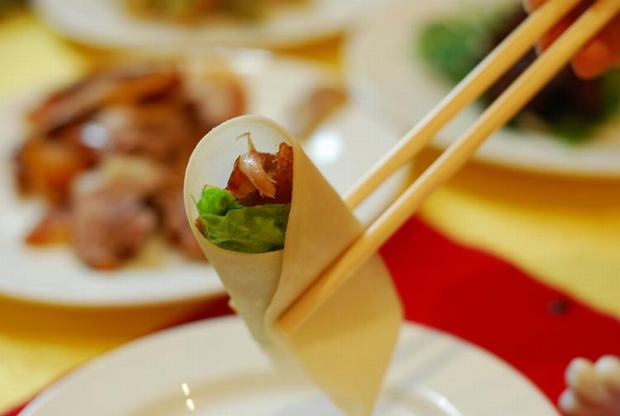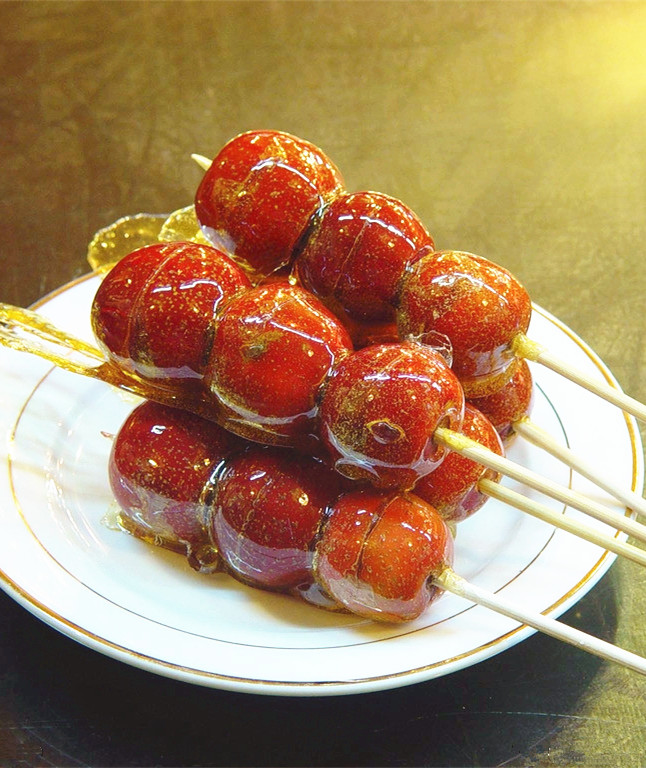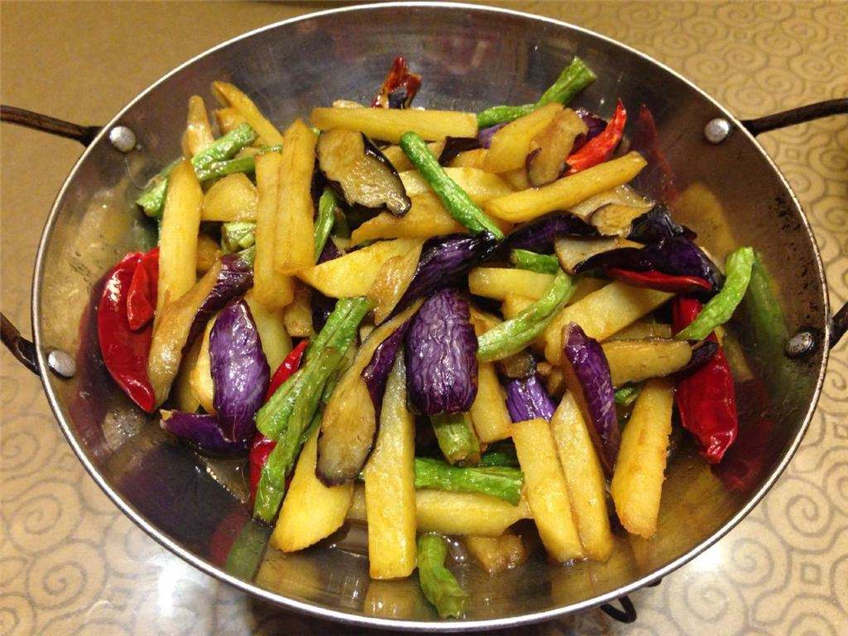Beijing Food and Restaurants
Beijing food has a glorious history. Anyone who has been to Beijing, when it comes to eating, will be quite interested in Beijing snacks in addition to the famous dishes such as Peking duck and fried noodles.
Beijing food can be divided into three types: Han Chinese flavor, Hui Chinese flavor and palace flavor. In terms of cooking methods, there are steaming, frying, pan-frying, branding, popping, roasting, shabu-shabu, rinsing, simmering, boiling and so on. In total, there are about a hundred kinds of dishes and street food.
Beijing Cuisine
People also call Beijing Cuisine the Capital City cuisine, one of top Chinese cuisines. Beijing was the capital city for the Liao, Jin, Yuan, Ming, and Qing dynasties. Except for the Ming Dynasty, all the rulers of these dynasties were from northern nomadic tribes. For those 500- plus years, the dishes available from Beijing's catering trade were dominated by meat dishes, which corresponded to the eating habits of the ruling class. The Mongolian rulers of the Yuan Dynasty were especially fond of mutton, and 80% of the dishes in their palace were made of mutton. These meat dishes still are made today, like the most famous Dong Lai Shun Hot Pot Mutton, Kao Rou Ji Restaurant (barbecue).
The Qing Dynasty rulers ate pork before moving to Beijing from Shenyang in northeastern China. Their cooking methods were stewing, roasting, and boiling. Pork and mutton have been equally represented in Beijing cuisine since the Qing Dynasty as a result of the dietetic influence of the Manchu. Roast and stewed pig, pork dishes, and pig's offal stewed in ceramic pots offered by the Shaguoju Restaurant (ceramic pots restaurant) were the first to be offered to suit the eating preferences of the Manchus.
Beijing cuisine is famous for its hundreds of dishes with special flavors that are unmatched by any other cuisine. Beijing cuisine does not emphasize on strangeness or uniqueness, only delicious food made from common ingredients with tastes that are very agreeable.
Beijing was the gathering place of the literati and officials, and many skilled chefs followed these people to Beijing. These chefs brought the different cuisines to the capital and greatly enriched the flavors of Beijing food. The Shandong, Huai-Yang, and Jiangsu-Zhejiang cuisines all strongly influenced Beijing cuisine.
• The quick-frying techniques of the Shandong cuisine and its use of onions greatly influenced the food in Beijing. For example, quick-fried mutton, a popular, common dish, is a typical Beijing dish that uses the cooking skills and flavoring methods of the Shandong cuisine.
• Literati and officials placed high expectations on restaurant food, and many even created dishes. The chefs in Beijing all boasted of being able to create the dishes of the southern cuisines.
Palace Beijing Cuisine
It is generally believed that the Qing Dynasty imperial diet was based on Shandong cuisine, Manchu food, and Suzhou and Hangzhou food. It is an outstanding representative of Chinese Food.
Since the Ming and Qing dynasties, Chinese court cuisine mainly refers to Beijing court cuisine. It is characterized by strict selection of ingredients, fine production, beautiful shapes and colors. And its taste is known for being clear, fresh, crispy and tender. The imperial kitchen in the Forbidden City provided three meals a day exclusively for the emperor and the royal family. The famous dishes of the imperial cuisine include the Imperial Buddha Jumps Over the Wall, Stir-fried Chicken Breast, loin in a Pouch, Four Kinds of Pork Knuckles, Four kinds of sauces, Four kinds of Crispy Pastries, Small sugar cornmeal buns, pea Yellow, Kidney Yellow, etc.

Beijing Hutong Food
Authentic Beijing food is hidden in or near some centuries-old hutongs. Many old Beijingers would go to these hutong restaurants to enjoy the pleasure of food - at a cheap price. In addition to Peking Duck and Old Beijing Fried Noodles, you shouldn't miss the stir-fried liver, braised and boiled fire, door nail meat patties, hot pot mutton, bean juice, lamb scorpion, mustard greens and so on.
Popular Beijing restaurants in the hutongs include the Hutong Restaurant, Temple Restaurant Beijing, Li Qun Roast Duck Restaurant, and Mr. Shi's Dumplings.
>> Recommended 5-day Beijing Food Tour - Eat Like a Local Beijinger
Beijing Local Specialty Foods and Dishes
Beijing Street Food
When you are traveling in Beijing, don't miss the classic snacks in the streets and alleys.
- Sugar-coated haws are the most famous snack in Beijing. They are sold from big and small preserved fruit shops, dried food stores to street vendors.
- Aiwowo is also a very popular Beijing street food. Around the Lunar New Year every year, snack shops in Beijing start to sell Aiwowo until the end of summer and the beginning of autumn next year.
- Bee cake is a kind of pastry snack made of flour or rice flour steamed with sugar and fruit ingredients (jujube, cinnamon, pine nuts, raisins). There are many small honeycomb-shaped holes inside, so it is called Bee Cake.
- Steak cake is a summer street food in Beijing. It is usually sold at the same time as cold noodles.
- Sheep's head in white water is one of the best Beijing street food. It is sheep's head boiled in white water and sliced, sprinkled with pepper and salt.
- Hundred Fruit Rice Cake is a traditional snack for the Chinese New Year in Beijing. The rice cakes come in yellow and white colors, symbolizing gold and silver. Beijing's rice cakes are usually served in Muslim Halal food shops.
- Thin Crisp is a traditional snack in Beijing, thin and crispy. In the 1930s and 1940s, when eating breakfast in Beijing, one used to ask the fried cake seller for a thin crisp.
Traditional Beijing Breakfast Food
In the early morning in Beijing, fried liver is the favorite breakfast of local people.
>> Related reading: 12 Most Popular Chinese Breakfast

Popular Beijing Food Markets and Streets
Wangfujiang Snack Street: Located on the north side of East Chang'an Street in Dongcheng District, Beijing, and on the south side of the Friends World Shopping Center, Wangfujing Snack Street is a collection of more than 500 kinds of snacks from Beijing and other places. There are more than 100 stores and stalls in the street. In addition to savory snacks, there are also old-fashioned stalls specializing in selling and making folk crafts. On the second floor is the “Halal Flavor Garden”.
Guijie in Dongzhimen - This is the capital's most famous food street, and was initially formed in 1997. As the street became more popular at night, the people called it "ghost street". Spicy dishes such as spicy crayfish and spicy meat crab are the most popular foods of Guijie.The street, no more than 1.5 kilometers long, is packed with nearly 200 restaurants of different styles and tastes, offering you an authentic taste of the country's eight major cuisines.
East Square - "Big Food Generation" Food Street - There are all kinds of foods and snacks from home and abroad, from ice cream, candy, Ajisen Ramen, masabi, Korean barbecue, etc.
Xingba Road Food Street (also a bar street) - The restaurants opened by some celebrities are very popular there. In addition, there are Sichuan and Yunnan restaurants, as well as a variety of Japanese cuisine, Korean cuisine, and southeast Asian cuisine, Italian cuisine, African cuisine restaurants.
Fangzhuang Food Street - The famous restaurants which have stores in the busy areas have branches here.The restaurants here are special and diverse, with both Chinese and western foods.
Qianmen Food Street - Qianmen street has a collection of the capital's many time-honored restaurants. Although the popularity of this place is not as hot as other food streets, it represents the food culture of Beijing, and a must-visit place for travelers.
>> Recommended Beijing tours to enjoy Beijing foods and snacks
Beijing Restaurants Guides for Muslim, Indians & Vegetarian
Muslim Restaurant:
Hongbinlou Restaurant
Hongyunlou Restaurant
Kaorouji Restaurant
Muslim Baikui Century-old Restaurant
Muslim Mansion Restaurant
Indian Restaurant:
The Taj Pavilion Indian Restaurant
Tandoor Indian Cuisine (Inside Zhaolong Hotel)
Spices

The Taj Pavilion
Omar Khayyam
Mirch Masala
Vegetarian Restaurant:
Gong De Lin Vegetarian Restaurant
Pure Lotus Vegetarian
Bodhi Vegetarian
Jiaheyuan
Lin's Dining Lounge
King's Joy
>> Keep reading: Halal Food in China, Vegan Restaurants in China